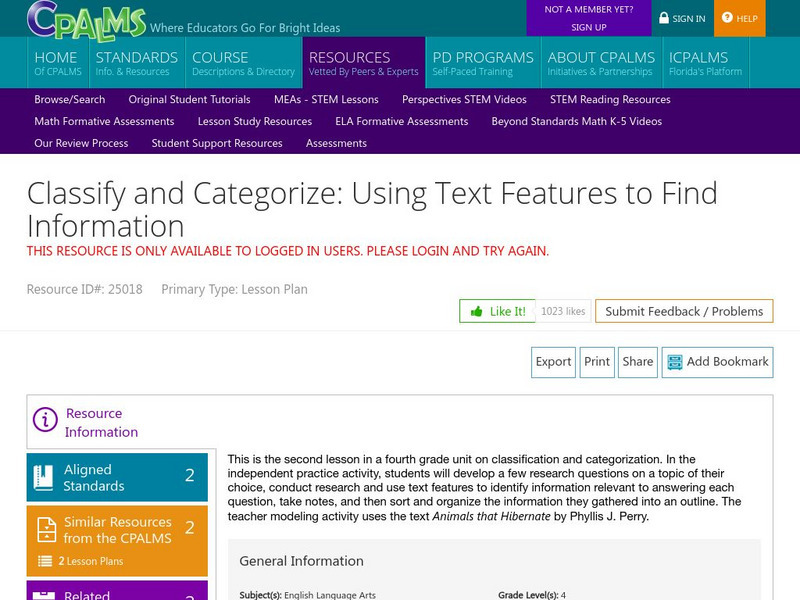Curated OER
Japan: A Cultural Study
Third graders "take a trip" to Japan. They discover what life is like for a typical Japanese child and compare/contrast it to life in America. They give an oral presentation of Japanese holidays and festivals.
Curated OER
The English Settle America
Sixth graders compare immigration today with that of the colonial period. They locate colonies on a map and describe reasons their families immigrated to the United States.
Curated OER
Becoming A Local Historian
Pupils practice the art of being a historian. They compare primary and secondary resources to conduct a critical thinking assignment. Students compare the map of the Baton Rouge area to a modern one in order to make inferences about the...
Curated OER
Connecting Students to a Professional Mentor
Students use videoconferences to consult with a professional mentor as they work on a project or experiment in their science class. They evaluate the mentor experience through a written reflection. Students are assessed based on the...
Curated OER
Blood Vessels Lab
In this blood vessel worksheet, students compare microscope slides of arteries, veins, and capillaries. This worksheet has 43 fill in the blank questions.
Curated OER
Change & Conservation of City Landscape
Seventh graders participate in fieldwork by observing and photographing buildings.
Curated OER
Lose the Lute!
Students use Shakespeare's plays to add modern music to match the mood in the play. They assign adjectives to the original songs of the play and find a song with the same mood. They work together to role-play the play with new music.
Curated OER
Plan an Advertising Campaign to Attract New Citizens
Students examine how to use visual media as a creative way of thinking about and responding to immigration issues. They conduct Internet research, and design and create a poster or brochure to attract new immigrant to Indiana.
Curated OER
The Very Hungry Caterpillar
Visually represent a retelling of the story by writing and illustrating their own Hungry Caterpillar book.Observe and describe the life cycle of a butterfly.Also, observe caterpillars, record growth rates and changes over time.
Curated OER
Myths and Folk Tales
Seventh graders perform research in order to appreciate stories taken from the genre of myths and fables. The examples of the stories create a context for students to create their own myths.
Curated OER
Language Arts: A "Perfect" Lesson
Students read "Be A Perfect Person in Just three days," and participate in a host of activities. Connected to technology, they use online sources to create word searches and puzzles from vocabulary words. In addition, students create...
Curated OER
The Portrait
Students discuss the historical painting of portraits. In this art history lesson, students examine the history of portraiture during the nineteenth century. This lesson is intended to be used with a visit to the Musee d'Orsay in France.
Florida Center for Reading Research
Florida Center for Reading Research: Text Feature Find
Students will identify text features.
Florida Center for Reading Research
Florida Center for Reading Research: Expository Text Structure: Book Look [Pdf]
A lesson plan in which learners look through a book to identify text features and complete a graphic organizer. Materials are included.
Better Lesson
Better Lesson: Text Feature Diagrams
At the end of this instructional activity, students will be able to identify and create diagrams associated with informational text. Included is a link to an eSpark video on diagrams, rules for group work, multiple examples of diagrams,...
Better Lesson
Better Lesson: Introduction of Text Features
Dr. Murphy shares a comprehensive lesson plan to support students identifying various text features in informational texts. Students will mentally and physically engage in active learning to know how to navigate through different types...
South Carolina Educational Television
Know It All: Non Fiction Text Features
Fifth graders will use non-fiction books to identify and explain how text features help them as individual readers.
Better Lesson
Better Lesson: Points of Informational Text Main Idea and Details
This lesson plan uses the book Explorers of North America - A True Book by Brendan January to teach students how to identify the main topic of a multi-paragraph informational text and specific paragraphs within the text. Students are...
ReadWriteThink
Read Write Think: Comprehending Nonfiction Text on the Web
Contains plans for three lessons designed to improve comprehension of nonfiction, especially nonfiction texts on the web. It focuses on identifying text features, locating specific information, and generalizing that information. In...
CPALMS
Cpalms: Classify and Categorize: Using Text Features to Find Information
[Free Registration/Login Required] Students will develop research questions, classify information into an outline form, and use the features of nonfiction writing to identify information relevant to a research question.
British Library
British Library: 19th Century Non Fiction Texts: Work & Welfare
This thematic collection will allow students to read and understand 19th-century non-fiction texts, and support them in identifying key features for a range of genres, audiences, and purposes. Each source is accompanied by original...
British Library
British Library: 19th Century Non Fiction Texts: Gender, Behaviour & Etiquette
This thematic collection will allow learners to read and understand 19th-century non-fiction texts, and support them in identifying key features for a range of genres, audiences, and purposes. Each source is accompanied by original...
British Library
British Library: 19th Century Non Fiction Texts: Education
This thematic collection will allow students to read and understand 19th-century non-fiction texts, and support them in identifying key features for a range of genres, audiences, and purposes. Each source is accompanied by original...
British Library
British Library: 19th Century Non Fiction Texts: Crime & Punishment
This thematic collection will allow students to read and understand 19th-century non-fiction texts, and support them in identifying key features for a range of genres, audiences, and purposes. Each source is accompanied by original...






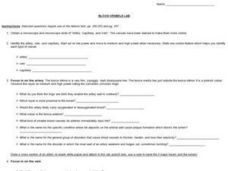





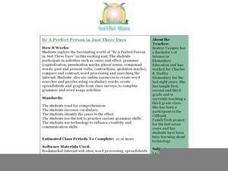
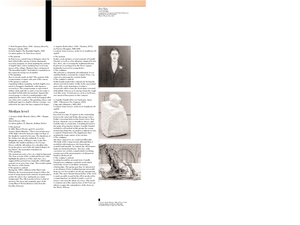
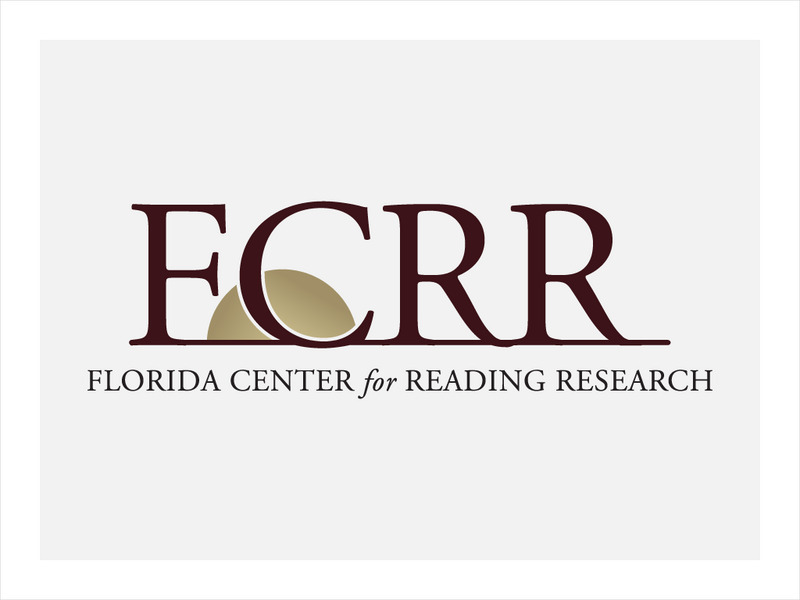
![Florida Center for Reading Research: Expository Text Structure: Book Look [Pdf] Lesson Plan Florida Center for Reading Research: Expository Text Structure: Book Look [Pdf] Lesson Plan](https://content.lessonplanet.com/knovation/original/509120-2284420fedcb16b27a3acf9ff66e58cc.jpg?1661786942)




